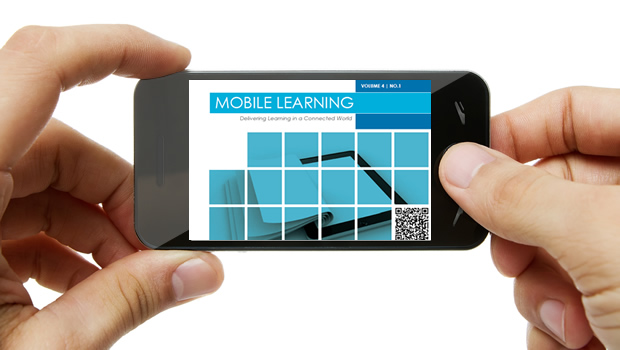Regular readers of this blog will be aware that we recently supported ASTD research on Mobile Learning, a report around that was released in May 2012.
ASTD conducted a free webinar on that research report this week. The speakers at the webinar were Kevin Oakes (founder & CEO of i4CP, earlier founder of Click2Learn which was merged with Docent to form SumTotal) and John Polaschek (Sr. Manager, Learning Technology at Qualcomm). They made some very interesting points during the webinar which resonated with what we’ve been sharing on this blog. Here are my key takeaways from the webinar, just in case you don’t want to go through the whole 69 minute recording of the webinar.
-
Tablets as part of mobile learning mix
Although not the same as mobile phones, tablets are included in the study as part of mobile learning devices. Kevin believes it’s the tablets that have really got mobile learning started. John agrees and highlights an emerging trend that companies are identifying use case for PCs, tablets, and mobiles separately to design and deliver appropriate content or information. We have written about tablet learning being different from others as well.
-
Is mobile learning really happening?
There is no doubt mlearning has been a slow starter. It’s been on the horizon for almost a decade now, but we still wonder if it’s really happening. John believes year 2012 marks the beginning of truly making a move towards mobile learning.
-
iPad rules the market
John pointed out to a Forbes article that lists 50 largest deployments of iPads. The list is quite a mix of K-12, enterprises and government organizations. To highlight the importance of tools like iPad in trouble shooting and performance support, Kevin talks about a case where an Australian jumbo jet developed some snag mid-air and it took 5 pilots (3 in the cockpit and 2 others who were by chance on that flight) to go through the manual to get that snag resolved. A digital manual with any hyperlinks and required multimedia could have been so much simpler and hugely important in avoiding a potential fatal accident. John pointed to this survey which found that 73% of US organizations’ intend to buy iPads in 2012. There’s no doubt that iPad rules the tablet market and is also driving mobile learning adoption.
-
Native Apps vs Mobile Web
According to John, native apps deliver much better user experiences currently, however this will change in future, as bandwidths improve, browsers become more powerful and HTML5 standards evolve, web based mobile solutions will be preferred over apps.
-
Mobile delivery & market performance
The research found that “the delivery of internal content by mobile devices is strongly correlated to learning effectiveness and to market performance”. However, 68% of high-performance organizations still do not provide learning via a mobile device, which further suggests that the market is still nascent
-
Top uses of mobile in learning
Easily accessible reference material, performance support, and video are the top 3 usage of mobile devices – which should not be a surprise. Not many organizations are looking to deliver full courses on mobile devices.
-
Qualcomm’s implementation
of learning & communication on mobile using their own HTML portal (created using jQuery mobile) which helps launch other external portals/apps namely Lynda.com, Harward Manage Mentor, Word Press, Vuforia and others. Interestingly John mentions that a lot of these programs are NOT integrated with any LMS. They simply track usage like you would do for a website, which we believe is the best way to go about implementing mobile learning and not getting stuck on SCORM or any other integration. Looking at the screenshots of Qualcomm implementations will give a good idea of what’s possible. I urge you to watch just this part of the webinar if you can’t view all of it (jump straight to the 35th min).
-
Gimbal
– John introduced Qualcomm’s new product Gimbal, which they describe as a social awareness platform.
This is a hint of times to come. I believe we’re getting closer to having performance support agents on our mobile devices which I discussed a couple of years ago.



















